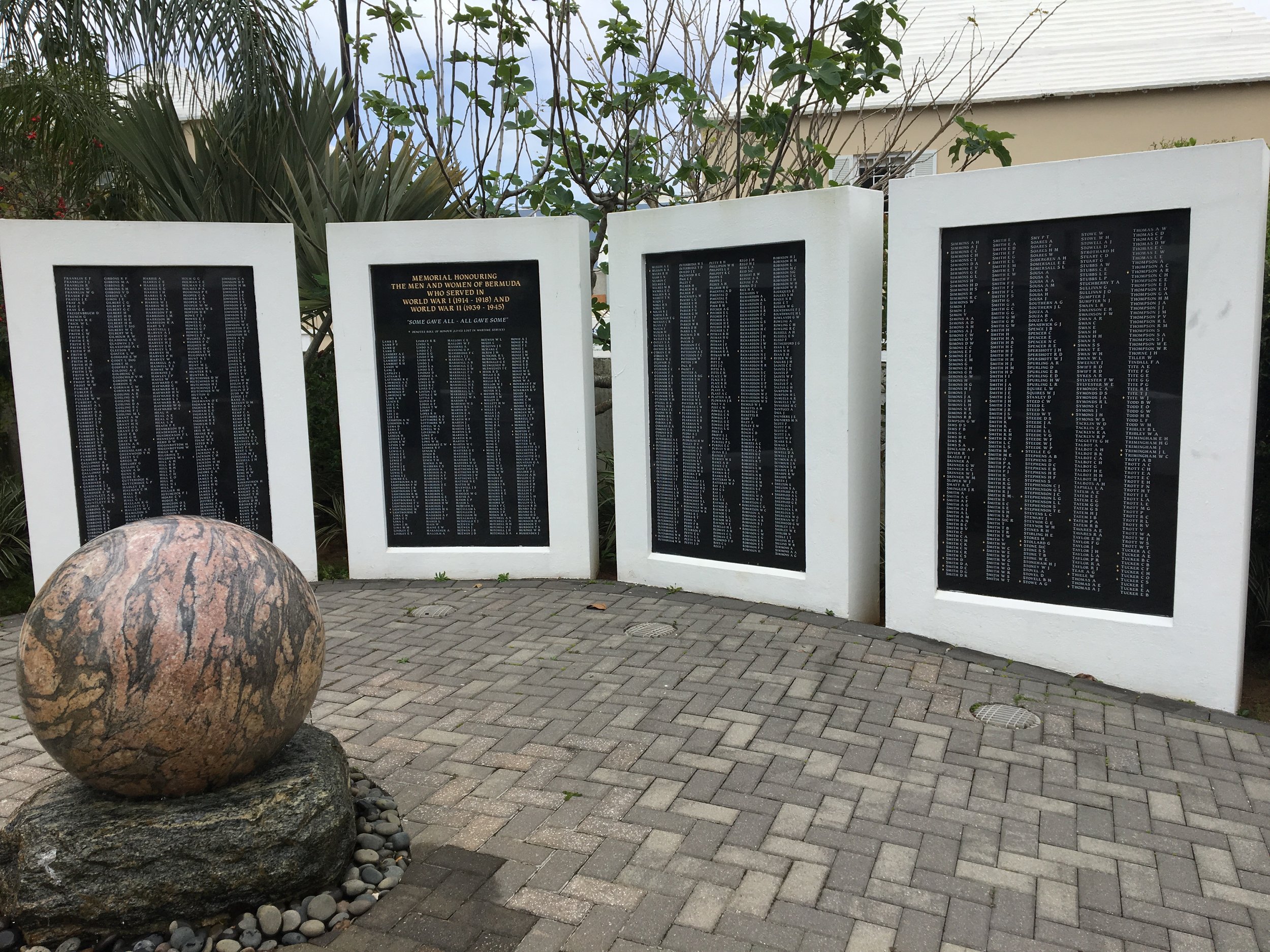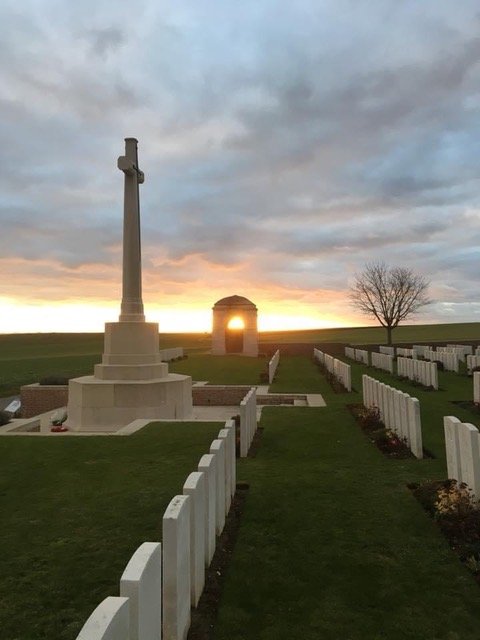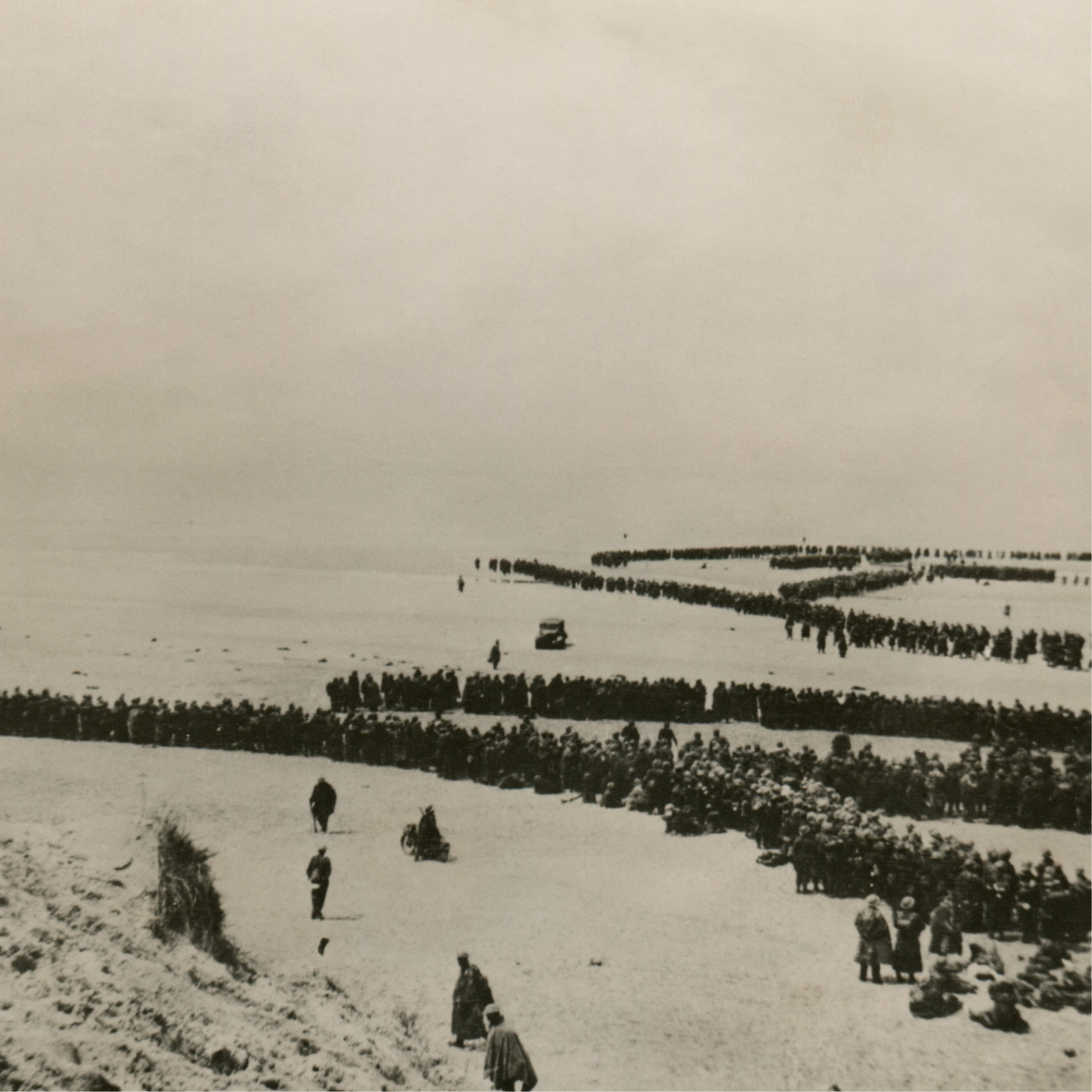Guests never fail to comment on the beauty of Commonwealth War Graves Commission (CWGC) cemeteries. It is the story of the soldiers we try to reveal. Here is one shared by team member Nick Saunders.
For me as a battlefield guide, telling the stories of the men and women who are buried or commemorated on the battlefield is very important. If we know who they were and what happened to them, saying ‘We will remember them’ becomes for me, more meaningful.
I bring people to the grave of Captain Walter George William Bailey of the Hampshire Regiment, who is buried in Serre Road No.2 Cemetery on the Somme battlefield.
Walter was born in Bournemouth in 1895. He was educated at Bournemouth Grammar School for Boys. After leaving school he went to Queens College, Cambridge. He had decided he wanted to take Holy Orders and go into the church. He was an active supporter of St John’s Church at Boscombe.
Whilst at Cambridge he was a member of the University Officer Training Corps. On the outbreak of war, instead of finishing his degree Walter volunteered to serve in the army. He was commissioned and posted to the newly formed 15th Battalion the Hampshire Regiment. This was one of two service battalions, known unofficially as the ‘Pompey Pals’, raised by the Mayor of Portsmouth.
In December 1915, Walter married Miss Emeline Jane Webster in St John’s Church, Boscombe.
In May 1916, the battalion was posted to France. By September 1916 the battalion had moved to the Somme area and on the 12th of September went into the front line west of Delville Wood. By now Walter Bailey was a captain and a company commander.
The battalion was part of 122nd Brigade part of Fortieth Division which was tasked with the capture of the village of Flers on the 15th of September 1916. History was made on that day as it was the first ever use of tanks in battle.
The war diary and the regimental history record that is was during the latter stages of the battle when the battalion attempted to capture Flers Trench that Captain Bailey, the last surviving Company Commander was killed.
That evening the 15th Hampshires were relieved and went onto reserve. Total casualties were 292 killed, wounded and missing. This included eight officers killed and five missing.
Captain Bailey’s wife Emeline was informed that her husband had been killed but that his body was missing. On the 19th of November 1916 his daughter Margaret Emeline Bailey was born.
Post war, Walter’s wife and his mother visited Flers and started to look for Walter’s body. They were shown around the battlefield by one or two survivors from the battalion. They spoke to local farmers and land owners and frequently wrote to the CWGC, then Imperial asking for any information on the bodies of British officers located in the area.
In December 1930 people searching for metal and items of scrap value on the battlefield found a body. There were captain’s pips, a Hampshire badge and a wedding ring as identification. The body was buried in Serre Road No.2 Cemetery.
The CWGC wrote to Emeline and asked her what the inscription was inside the ring. Emeline went to Mr Meader, the jewellers in Boscombe and obtained a statement from him describing the ring and the inscription he had engraved inside it. It was ‘From Lena. Dec 8 1915.’ With this information along with the captains rank pips and the Hampshire Regiment badge, the CWGC identified Captain Bailey. He had initially been named on the Thiepval memorial. His name was erased and a new stone bearing Walter’s name was placed on the grave. The epitaph reads ‘God is Love’.
The love and perseverance of his wife and mother helped to identify Walter when his body was found.


















